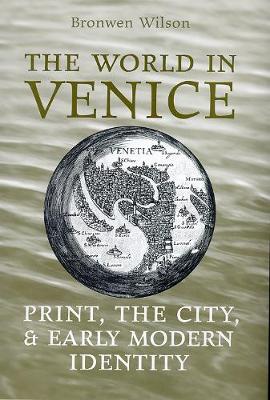Studies in Book and Print Culture
1 total work
Positing a dynamic relationship between print culture and social experience, Bronwen Wilson's The World in Venice focuses on the printed image during a century of profound transformation. City views, costume illustrations, events, and portraits of locals and foreigners are brought together to show how printmakers responded to an expanding image of the world in Renaissance Venice, and how, in turn, prints influenced the ways in which individuals thought about themselves. Woodcuts and engravings of cities and inhabitants of Europe, and those of distant lands, initiated a sudden and pervasive experience with alterity that redefined the relations of Europeans to the world. By condensing the world into pictures, print enabled a radically novel and vicarious experience of others. Wilson explores the overlapping and evolving relations between space, vision, print, and identity, and engages with current scholarly debates concerning ethnicities, gender and geography, copies and originals, travel, nationhood, fashion, urban life, visuality, and the body. Venice was one of the largest cities in Renaissance Europe, a trading crossroads, and a centre of print.
The World in Venice shows how Venetian identity came to be envisioned within the growing global context that print constructed for it.
The World in Venice shows how Venetian identity came to be envisioned within the growing global context that print constructed for it.
